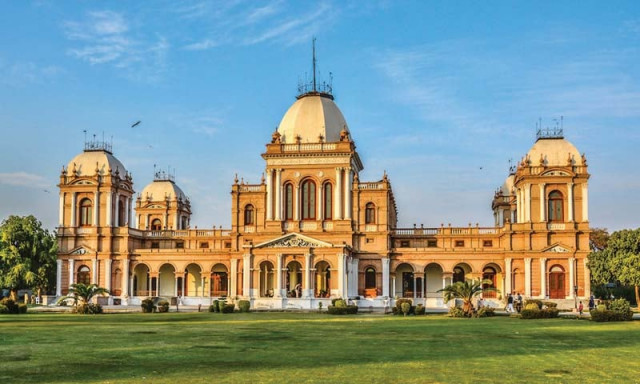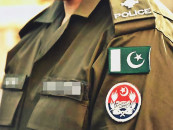Noor Mahal: the hidden gem of Bahawalpur
The property was abandoned after a dispute among the heirs of the last ruler

The property was abandoned after a dispute among the heirs of the last ruler. PHOTO: FILE
This beautiful building inspired by Italian construction style is one of the hidden gems of Bahawalpur and was built by a British Engineer named Heenan in 1875 at a cost of Rs1.2 million.
The palace is known for its colourful, exquisite exterior made of cut and dressed bricks that make this a unique piece of historical architecture. Noor Mahal’s distinguishing architectural feature is the use of five domes built in the traditional style.
Taj Mahal's main dome to undergo beauty treatment
Since its construction, the palace shot Bahawalpur’s popularity among tourists, who throng the site every day to have a glimpse of the vintage marvel.
The purpose
Noor Mahal is one of the latest monuments in Punjab that was placed under the antiquities act. It was built for the residence of Nawab Sir Muhammad Sadiq. However, he did not live in the palace as the royals did not prefer to live near a graveyard – the Basti Muluk Shah Graveyard was located a few metres away.
The palace was later used as the state guest house. During his tenure, the Nawab also held occasional cabinet meetings in Noor Mahal. On some occasions, the palace was used as the State Court with the Nawab addressing his courtiers and the army during wars.
Massive structure
Noor Mahal was built in the middle of a spacious garden having a water tank and fountains. It consists of 32 rooms, including a basement. When the construction was completed, the palace was decorated with thick carpets and paintings made by western artists.
The two-storey palace had exquisite furniture and fixtures like chandeliers and cupboards that were imported while it also consisted of rich collection of arms in its armoury.
As part of the Mughal traditions, some swords and muskets are also on display inside the palace.
In 1906, a mosque was added to the palace by Nawab Bahawal Khan, a later ruler of the state of Bahawalpur. He also renovated the structure at a cost of Rs100,000.
Downfall
According to an old tale, a property dispute took place among the heirs of the last ruler which led to the abandonment of Noor Mahal as well as several other buildings. The palace was locked under a judicial order but most of its artefacts were smuggled out. Its furniture, carpets, paintings and crockery were sold by thieves almost all over the country.
On October 12, 1997, the army took over the possession of the palace and restored it. Later, it was used as an army club. The building is still in army’s possession.
In the limelight: Budding artists’ work goes on display
Precious moments
On January 11, 1890, Prince Albert Victor visited Noor Mahal as a guest
On December 22, 1892, Sir McOrth Beck, who served as a senior finance commissioner of Punjab, stayed at the palace for three days with his family
On May 11, 1897, Queen Victoria’s 60th birthday was celebrated at the palace
On February 9, 1933, a historical function was held to celebrate the union of British Government and Bahawalpur State
On March 8, 1934, 10-year jubilee celebrations were arranged by the State of Bahawalpur at Noor Mahal
Published in The Express Tribune, October 21st, 2016.



















COMMENTS
Comments are moderated and generally will be posted if they are on-topic and not abusive.
For more information, please see our Comments FAQ